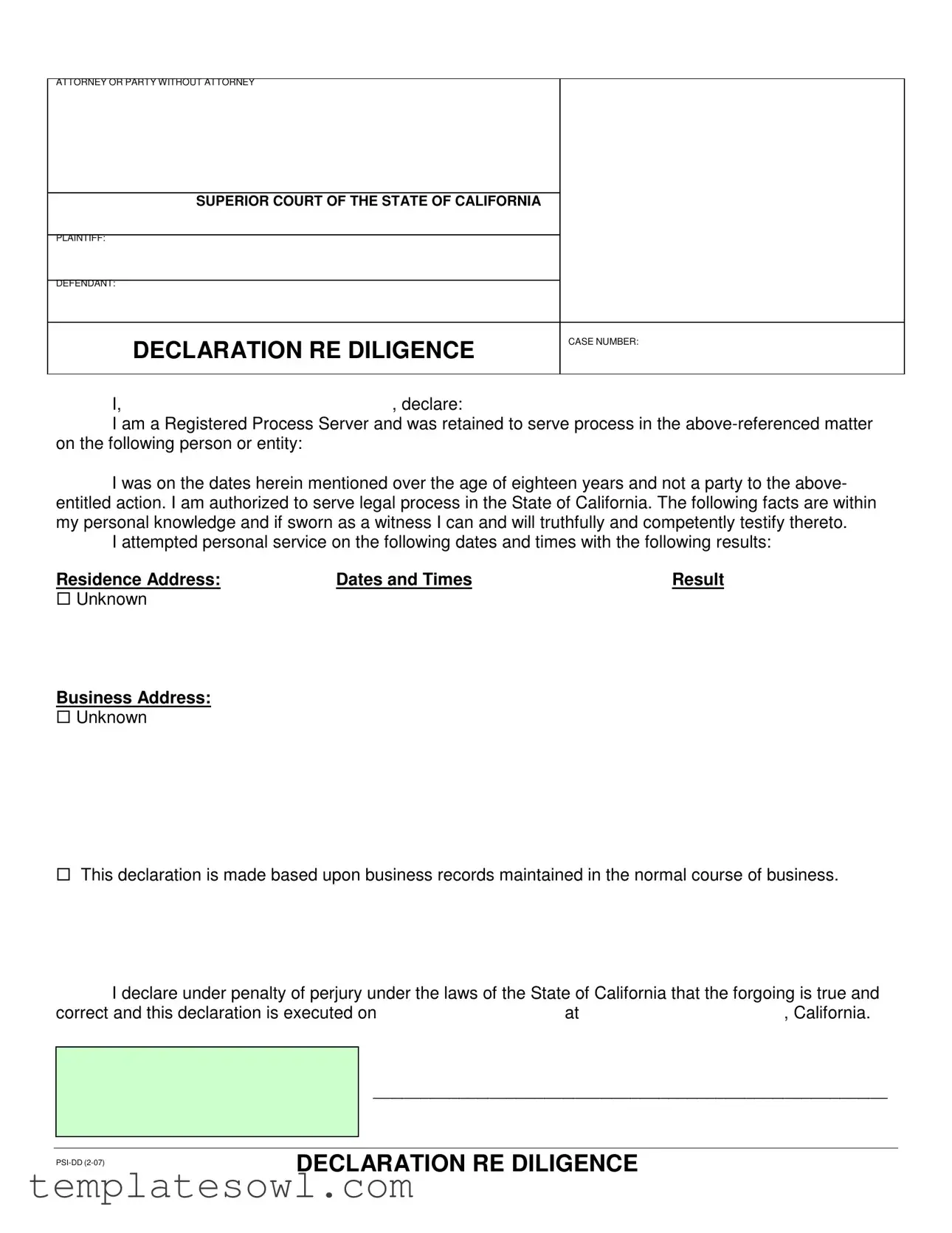What is the California Diligence form?
The California Diligence form is a legal document used by process servers to provide evidence of their attempts to serve legal papers. This form is particularly important in cases where personal service has been difficult or unsuccessful. It gives a clear account of the steps taken, establishing that reasonable efforts were made to serve the documents to the intended recipient.
Who can fill out the California Diligence form?
Only a registered process server or an authorized individual can complete the California Diligence form. This means that the person filling out the form must have a legitimate standing to serve legal documents in California and must be over the age of eighteen. Their role includes making an honest effort to deliver the papers to the correct person or entity as part of the legal process.
What details must be included in the form?
When completing the California Diligence form, several key pieces of information must be documented. The form should include the name of the person or entity being served, specific dates and times of service attempts, their outcomes, and the address at which the attempts were made. Including all relevant data helps to create a comprehensive record of diligence in service attempts.
Why is the California Diligence form important?
This form serves a crucial purpose in the legal system. It acts as proof that the process server has made substantial efforts to deliver documents and satisfies the legal requirement for service of process. If a case goes to court and the defendant claims they were not properly served, the Diligence form can help establish that all reasonable steps were taken to inform them of the action against them.
What happens if the form is not filled out correctly?
If the California Diligence form is not filled out accurately, it can lead to complications in the legal process. Inaccuracies may result in delays or even potential dismissal of the case if the court determines that proper service has not occurred. Therefore, it is essential to carefully complete the form, ensuring it truthfully reflects all service attempts made.
Is there a penalty for providing false information on the form?
Yes, providing false information on the California Diligence form carries serious consequences. The individual filling out the form declares under penalty of perjury that the information is true and correct. If it is discovered that false statements were made or if the form was misused, that individual could face legal penalties, including potential charges of perjury or other civil liabilities.

